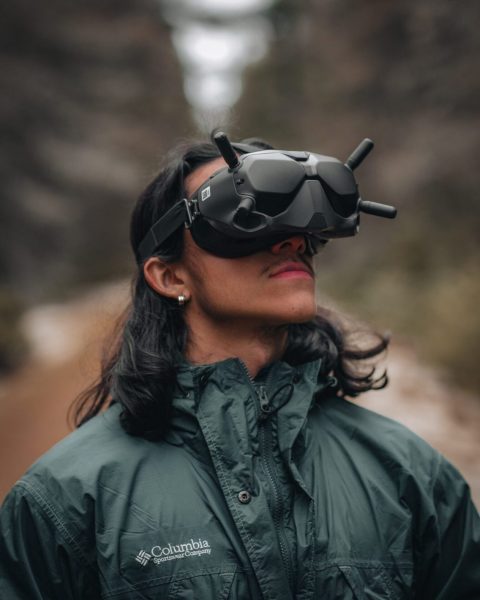
Augmented Reality
AR is a term that is less likely to be thrown around by the average person than VR. While we might have been aware of the promise VR was showing us back in the 80s, most people have only started hearing about AR in the last five years or so. That is because augmented reality, a technology that overlays digital information onto the real world via a screen, has only been possible with the rise of the smartphone.
The biggest name in AR currently is Pokemon Go, a game based on Niantic Labs’ previous cult-classic Ingress. Players ‘catch’ Pokemon as they go about their daily lives, using the map within the game to find the little critters that randomly pop up across the world. Most of the Pokemon are quite common, but on the occasion that a rare Pokemon appears, crowds have been known to swarm the area in scenes reminiscent of Beatlemania.
The technology itself simply superimposes these creatures onto a smartphone screen, and as far as AR goes, it is a pretty simple implementation. To see just what AR could lead to in the gaming world, look no further than The Machines on IOS. This game turns your dining room table into a DOTA 2-style RTS game, where you walk around the table, ordering your characters to move and attack your command.
Being an online multiplayer game, this way of surveying the battlefield is so easy to understand, that it makes some of our favorite strategy games look positively clunky in comparison. Want to plan an attack from the north side of the map? Then you better move around the table to see whether the terrain on the other side of the mountain is suitable for a sneak attack. While the ability to move your viewpoint around a map is nothing new, the natural way it is implemented in games like The Machines brings a tactile and interesting new twist to the genre.
Mixed Reality
With mixed reality, two worlds collide. The virtual world, in which we are completely immersed when playing VR games, and the real world which forms the basis of the augmented reality games, come together in a way that makes them look as if they are interacting.
A perfect example of this would be the teaser that Microsoft showed us at a keynote last year, where a player in his lounge battles against waves of aliens who seem insistent on gaining access to his living room. Wearing the Microsoft Hololens, the player seemingly has little to worry about as he walks around his lounge, until suddenly, something sounds like it is breaking through his wall. Sure enough, cracks begin to appear in the wall, before a robot alien ship smashes straight through and begins to release tiny little bots for the player to fight off.
Now, obviously, the player’s wall has not been broken in real life, aliens are not trying to destroy his living room, and his life is not in danger. But the mixture of the real world, with high-quality graphics superimposed on top of it, and the ability to mix the two seamlessly results in some quite stunning experiences.
Now, it is worth noting that this technology is in its infancy. With the extremely powerful Hololens, and a beefy PC to boot, the results look extremely impressive, but the real test for MR is going to be in the next five to ten years. Smartphones are getting close to being able to run these sorts of programs well, but as with any of these technologies, the better the graphics, the easier it becomes to ‘buy into’ the experience. The Hololens demo, whilst exciting, is out of the reach for most consumers, both in price and practicality. In another five years, when the Hololens is hopefully a few iterations down the line, we may see MR making some inroads in the entertainment space. For now, though, it is very much a high-end, niche product.
There may be a few of you thinking “so what exactly is the difference between AR and MR!?!” This is a valid question. They are, to be perfectly honest, very closely related. So much so that many tech publications are referring to them as one and the same, or using the terms interchangeably. It is possible that eventually, one of the terms, most likely MR, is made redundant, but for now, the accepted differences seem to center around whether the graphical overlay is quite simple (AR), or has complex 3D graphics anchored to real-world points (MR). As everyday hardware becomes even more powerful, expect AR to mean everything in this sphere.

Virtual Reality
VR, being the most immersive of the three technologies, has always been revered by gamers since the early days of video games. While many of us may remember the promise of VR back in the 80s, it has only been in the last 7 years that VR has become meaningful in the gaming sphere.
At the moment, VR is still being held back by a relatively high price point, but we’re starting to see an expectation arise that games should be both playable on TVs and in virtual reality, and as such, they may start to be created that way in development.
Using These Technologies
These technologies are already becoming popular and that will rise in the long term future. These technologies differ more than enough to allow them all to flourish. VR looks set to dominate in the games department. The sheer immersion that VR provides was always going to fit video games like a glove, whereas AR and MR can have some hugely beneficial uses outside of entertainment. Glasses that allow directions to be displayed on the road as you drive (a la GTA V) will stop us from having to glance at the SAT NAV in the future, and AR apps are already allowing us to virtually place furniture in our houses before buying, just to see how it looks (thank you IKEA).

That isn’t to say AR games won’t exist. As technology matures, and new devices hit the shelves, we are sure to be treated to some amazing AR games. For those of you looking for the ‘wow factor right now, it is worth checking out Microsoft’s Minecraft Hololens demo. Watching a Minecraft realm appear from a dining room table, and be manipulated like a child’s sandcastle was one of a number of the jaw-dropping moments in the show. It is also worth remembering that casual games, such as those played on your phone, are much easier to access than VR games on the same mobile platform. No other hardware is needed, and it is far less overwhelming to use for the average consumer than VR.
So whether it is VR or AR that suits you personally, there is no reason to think that the future of gaming will be anything other than spectacular, regardless of the platform.
AR, on the other hand, has already started to become more mainstream, with the likes of Snapchat and Instagram filters giving people a gentle introduction to the tech without them even realizing it.
As more people get to use this technology, we can expect to see it implemented more often in gaming. With the experiences being more immersive, and often more natural and fun to interact with, VR and AR could draw in more people than ever before. Gamer’s rejoice.
